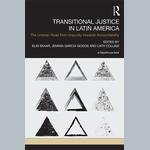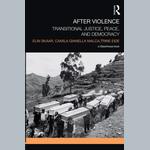Colombia: A peace that will last?
Colombian president Juan Manuel Santos managed to secure approval for the new peace agreement between the government and FARC before he comes to Oslo to receive the Nobel Peace Prize on December 10.
On November 30, barely two months after the first landmark referendum where the Colombian voters rejected the peace agreement carefully negotiated by the government and FARC, the Colombian congress signed a revised version of the peace agreement.
The end of armed conflict
Years of carefully orchestrated negotiation have led up to the peace agreement that ends the longest lasting civil war in Latin America – indeed in the world. More than 220.000 people were killed and around 6 million people internally displaced during the internal armed conflict. Paramilitary groups, FARC guerrillas and the state armed forces have jointly caused tremendous civilian suffering. How to deal with the human right violations committed by all parties to the conflict has been a crucial issue throughout the peace negotiations.
Opponents claim that the newly ratified peace agreement is nothing but a slightly rephrased version of the agreement that was rejected in the October referendum, and that the agreement lets perpetrators of human rights violations off the hook too easily. Elin Skaar, senior researcher at the Chr. Michelsen Institute, does not agree that the government and FARC representatives have taken the easy way around the questions of punishment for human rights violations.
-The negotiating parties have listened to critics and addressed many of the issues that have been raised concerning punishment and impunity. Although the new peace agreement still entails the establishment of special courts, it specifies that all judges on these courts shall be Colombian – not partly foreign judges. Another central change in the new peace agreement is that perpetrators of human rights violations that are non-politically motivated can now be punished according to regular penal practice, risking sentences of up to 40 years in prison. This goes for FARC members as well as state military and paramilitary personnel, says Skaar.
The promise that FARC members who are tried and convicted of politically motivated crimes will not have to serve time in ordinary prisons still holds. Instead, the restorative justice model chosen in the agreement establishes that they can be sentenced to community service including demining and acts contributing to reparation for victims, and imposed restrictions on free movement. This clause caused a lot of controversy leading up to the referendum, and remains a cause of unease for some who push for a traditional punitive justice model.
The proposed land reform may be another issue of controversy.
-0.4 % of the population owns 60 % of the land. The peace agreement ascertains that some of the land that has been unlawfully acquired throughout the armed conflict is to be given back to its rightful owners. Notably, land reform is already under implementation as part of the restitution process initiated by the Victims' law of 2011. There is also one other group that have an ulterior motive for criticizing the peace agreement. Powerful drug barons have a lot to gain from continuing unrest and conflict. Yet, the large majority of Colombians support the peace agreement, especially groups of organized victims and people living outside the cities in areas of influence of the armed groups, says Skaar.
Dealing with the past
So has peace come to last in Colombia? There was only limited political will to make the agreement part of the Colombian constitution – as was initially suggested in the first peace agreement that failed to be publicly ratified in the October referendum.
The signing of the peace agreement certainly does not mean that the past human rights violations are over and done with, Skaar stresses. She has worked extensively on transitional justice in Latin America and Africa, and has published several books on the topic.
-Transitional justice has two main functions. One of them is precisely the retrospective angle. Every society needs to deal with the actual human rights violations. There are several well-established mechanisms for doing this, such as documenting abuses though truth commissions; paying reparations to victims; prosecuting perpetrators through the courts; and getting rid of amnesty laws. In Latin America, the establishment of truth commissions and the elaborate efforts to revoke amnesty laws have been the main trajectory for transitional justice, says Skaar.
Another important aspect of dealing with past human rights violations is forward-looking, i.e. to put in place measures to ensure that such violations will not be repeated in the future.
-Establishing accountable institutions and implementing institutional reforms that solidify what has been achieved, is crucial. Many Latin American countries have seen internal armed conflicts and military dictatorship that have had devastating effects and left large parts of countries’ populations scarred. Yet, most Latin American countries have attempted, in various ways, to deal with their past through prolonged and thorough transitional justice processes. Although we cannot jump to the conclusion that this is the sole reason armed conflict has not flared up again, we know that transitional justice can play an important role in preventing new human rights violations, says Skaar.
- The Colombian peace agreement is exceptional in many ways, highlights Skaar. It explicitly deals with multiple problems underlying the conflict, such as inequality and drug trafficking. Most importantly from a transitional justice perspective, this peace agreement establishes a restorative justice model rather than the traditional punitive model. The Colombian peace agreement may thus become a new model for ongoing and future peace negotiations.
Publications

See you in court! Holding the military to account in Latin America

Transitional Justice in Latin America: The Uneven Road from Impunity towards Accountability

